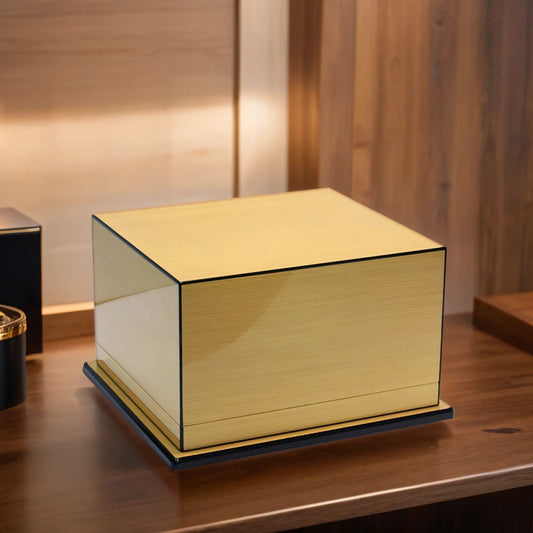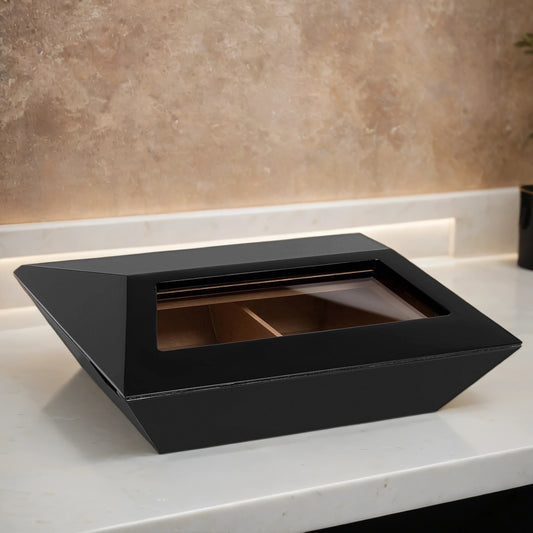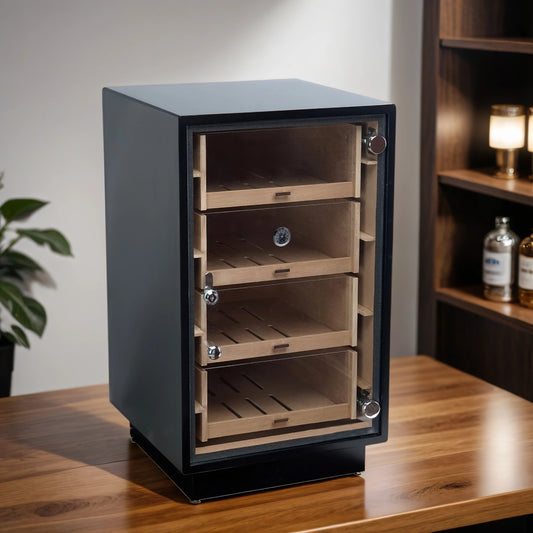
Cigar Anatomy: Unraveling Your Favorite Smoke
Ever wonder what makes a cigar tick? Let’s get into the nitty-gritty of cigar anatomy. Each cigar part has a purpose, bringing flavor, aroma, and structure into harmony. From the outer wrapper to the filler hidden inside, every component plays a role in delivering the experience cigar lovers cherish. Here’s a look at what goes into crafting a fine cigar.
The Wrapper
The wrapper is the most visible and often the most glamorous part of a cigar. This outer layer doesn’t just look pretty – it packs a punch of flavor and sets the stage for what’s to come. Choosing the right wrapper can make or break the cigar’s flavor profile. Here’s a look at some popular types:
- Ecuador Connecticut: Known for its pale, golden color and smooth, creamy taste, Ecuador Connecticut wrappers add mildness with hints of white pepper and nuts.
- San Andrés: Grown in Mexico, this dark wrapper’s volcanic origins bring rich, earthy notes with a bit of sweetness and spice.
- Nicaraguan: Bold and complex, these wrappers are famous for delivering a potent mix of spice and rich flavors.
- Corojo: Originally from Cuba, this wrapper offers a feisty, peppery taste. Sun-grown for intensity, Corojo is perfect for those who like a bit of kick.
- Dominican: A rarity among wrappers, Dominican leaves offer a smooth, creamy profile with subtle spiciness.
- Ecuador Sumatra: Dark, with flavors ranging from cedar and pepper to leather, this wrapper is full-bodied and adds serious complexity.

The wrapper is far more than a decorative outer layer. It’s the star of the cigar’s construction, influencing both the flavor and appearance in ways that demand precision and skill from the growers and rollers. To achieve a smooth, flawless wrapper, only the finest leaves are selected, requiring minimal veins and blemishes to maintain a consistent, polished look.
Cultivating wrapper leaves is labor-intensive, often requiring specific growing conditions to achieve the desired characteristics. Many wrappers, such as the Ecuador Connecticut or the San Andrés, are grown under shade or specific microclimates that allow the leaf to develop a consistent color and smooth texture. Shade-grown wrappers, for example, tend to have a lighter color and milder flavor because they’re shielded from direct sunlight, while sun-grown wrappers, like Corojo, are darker, thicker, and spicier.
In many cases, the wrapper can account for up to 70% of a cigar’s initial flavor, making it the defining element of the blend. With a single glance, cigar aficionados can often distinguish the wrapper variety and make an educated guess about the cigar’s flavor, intensity, and complexity—all from this single, carefully chosen leaf.
Binder Tobacco
Lying just beneath the wrapper is the binder, holding the filler tobacco snugly in place and maintaining the cigar’s structure. Think of the binder as the backbone of the cigar, ensuring it doesn’t fall apart mid-smoke. Binders are often thicker than wrappers, and though they don’t add as much to flavor, they’re essential for a smooth, consistent burn.
A typical cigar will have either one or two binder leaves, depending on the desired burn rate and draw. The binder keeps the burn even, preventing dreaded issues like “canoeing,” where one side of the cigar burns faster than the other. It might not get the spotlight, but the binder is the unsung hero of cigar construction.

Filler Tobacco
Now we’re getting to the heart of the cigar. The filler is where you’ll find the most variance in flavor and strength, thanks to the diversity in tobacco types and the craftsmanship of the cigar maker. Filler tobacco can be tightly packed or loosely arranged, impacting both the draw and the burn rate.
A tightly packed filler creates a slower burn and firmer draw, perfect for those who enjoy a long, steady smoke. Loosely packed filler, on the other hand, gives a lighter, cooler draw. Filler tobacco usually includes a mix of these three leaf types:
- Ligero: Grown at the top of the plant, Ligero leaves are strong, flavorful, and pack a serious nicotine punch.
- Seco: Taken from the middle of the plant, Seco leaves balance the blend, adding complexity and aroma.
- Volado: These lower leaves ensure a smooth burn and are often used as a stabilizing component in the filler.
Master blenders mix these leaves in various proportions, creating unique flavor profiles. A well-made filler blend makes each puff flavorful, with smooth transitions throughout the cigar.
The Cap
The cap is the bit you’ll need to snip before lighting up. Crafted from the same tobacco as the wrapper, it keeps the wrapper from unraveling. Caps come in different forms:
- Single Cap: The simplest form, commonly found on budget cigars.
- Double or Triple Cap: Often seen on premium cigars, especially Cuban ones, these multiple caps provide a firmer hold on the wrapper.
Cutting your cigar just above the cap line is a small step with significant impact, ensuring both the structural integrity and quality of the draw. The cap, crafted from the same tobacco as the wrapper, holds everything together, including the outer wrapper and inner filler.
When you cut too low, slicing into the shoulder, you risk unraveling the wrapper and compromising the cigar’s construction, leading to a frustrating and messy smoking experience. It’s a simple yet essential task that requires just the right amount of precision. With a neat, well-placed cut, you create a smooth, controlled opening that lets the smoke flow just as the maker intended.
The Foot
Finally, we reach the foot – the end of the cigar that gets lit. Toasting the foot before you fully ignite it helps ensure an even burn and brings out the initial flavors. There are a few foot styles you might encounter:
- Open Foot: The most common type, providing a balanced burn and an even light.
- Shaggy Foot: Exposes the filler tobacco beyond the wrapper, giving an intense initial taste.
- Closed Foot: Wrapped entirely with extra wrapper, offering a burst of wrapper flavor in the first few puffs.
Toasting the foot of a cigar is a vital, often underestimated step that sets the stage for a satisfying smoking experience. Done correctly, toasting ensures an even burn from the very first puff, allowing the cigar to light uniformly around its circumference.
This method avoids an uneven light and canoeing, leading to a frustratingly uneven experience that requires constant adjustments. Toasting allows the flame to heat the tobacco gradually, releasing aromatic oils from the wrapper and filler for a richer, more balanced initial flavor.

Cigar Bands
The cigar band is that small strip of paper (or sometimes foil) wrapped around the body of a cigar, usually near the head. While it may look like a simple decorative touch, the band actually serves several purposes. Originally, cigar bands were introduced as a way to protect gloves from the oils in cigars and to differentiate high-quality Cuban cigars from other brands. Today, they’ve become a way for manufacturers to showcase brand identity, history, and even a bit of the cigar's story.
Beyond aesthetics, the band provides a practical benefit: it helps keep the wrapper in place while you smoke. Removing it prematurely can risk tearing or loosening the wrapper, which may result in an uneven burn or disrupt the cigar’s construction. Many aficionados suggest smoking a cigar down to the band before removing it, allowing the glue to loosen so you can peel it off without damaging the wrapper.
In addition to branding, cigar bands serve as markers of quality. For collectors and enthusiasts, a well-crafted, detailed band often hints at the quality within, while providing valuable information about the cigar’s origin, blend, or production year. And, for those who enjoy keeping bands as keepsakes or mementos of memorable cigars, these little labels carry a lasting sense of the cigar's unique experience.
Craftsmanship in Every Layer
Each component in a cigar contributes to the smoking experience. From the flavorful wrapper to the supportive binder and the complex filler, every layer has a purpose. Understanding cigar anatomy allows you to appreciate the art behind the craft, making each smoke even more enjoyable. So sit back, grab a puro from your electric humidor, and appreciate every puff.












